Under the frequent clatter of trains passing overhead, a stretch of Tokyo known as Ameyoko hums with life. Bordered by Ueno and Okachimachi stations on the central JR Yamanote Line, the area offers just about everything — fresh seafood, vintage clothes, watches or, come evening, scores of office workers unwinding over drinks or dinner.
In a city as dense as Tokyo, real estate comes at a premium. As a result, train operators such as Japan Railways (JR) have long made use of the space beneath the elevated tracks they manage. These narrow strips host everything from bustling izakaya (Japanese pubs) and quirky boutiques to hotels, apartments and even kindergartens.
But not all of these spaces — even along the Yamanote, one of the world’s busiest train lines — are thriving. Some are used for storage or fenced off as back-of-house lots, and others sit vacant. Increasingly, however, developers are reimagining these under-track zones for what they are: untapped land in the heart of the world’s largest city.
In recent years, these forgotten corridors have begun to undergo a quiet revival, with their industrial bones and historical character preserved and reworked into creative hubs for artists, hobbyists and foodies alike.
One example lies just a short walk from JR Okachimachi Station, heading south toward JR Akihabara Station. There, nestled beneath the tracks, is 2k540 — a commercial complex tucked away from Akihabara’s main drag of anime shops and electronics retailers. Despite its location, it draws a steady flow of shoppers. Since opening in 2010, the complex has become home to around 50 studios, workshops and cafes.
“2k540 is railway lingo for 2 kilometers and 540 meters,” says Miki Fukuda, who oversees the facility for JR East Urban Development Corporation, a subsidiary of JR East that manages properties beneath the tracks and owns the buildings, leasing them to tenants. “It indicates the distance from Tokyo Station.”
The complex retains much of the original infrastructure used to support the elevated railway above, including rows of thick, rounded pillars.
“These are apparently quite rare, so we designed the space to highlight them,” Fukuda explains. The combination of the columns, high ceilings and storefronts lends the space a hybrid aesthetic — part bazaar, part cathedral.
The design choices also reflect the complexity of repurposing these spaces, which requires navigating zoning laws and national engineering codes. New buildings must maintain the structural integrity of the railway, meaning they cannot rely on the track bed itself as a roof. Developers are required to follow strict guidelines to avoid disrupting train operations or compromising passenger safety.
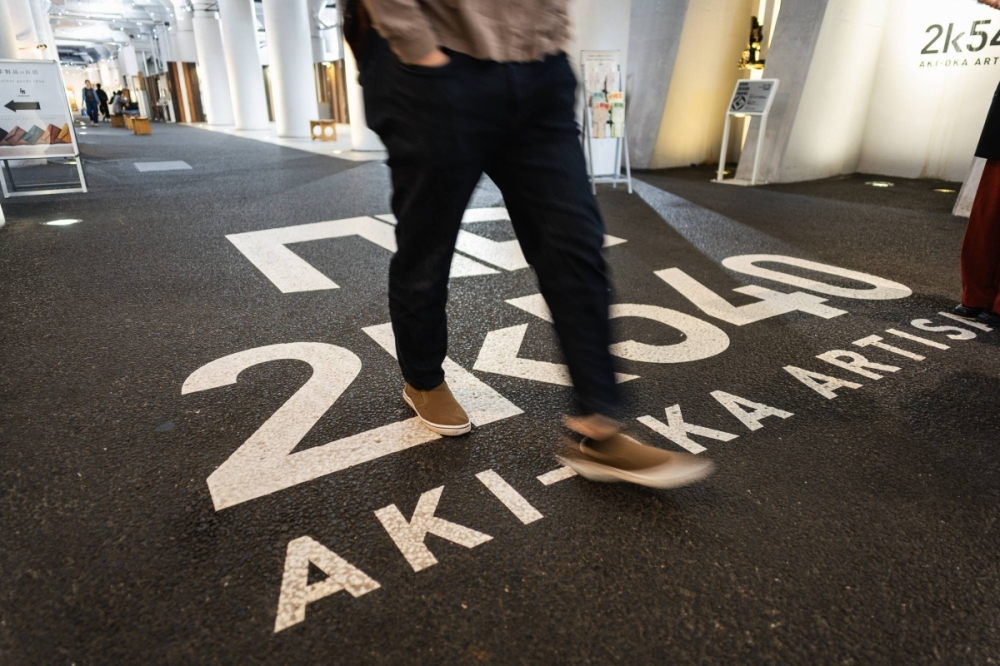
Between Okachimachi and Akihabara stations on the JR Yamanote Line is 2k540, a commercial space that gets its name from its distance to Tokyo Station.
| JOHAN BROOKS
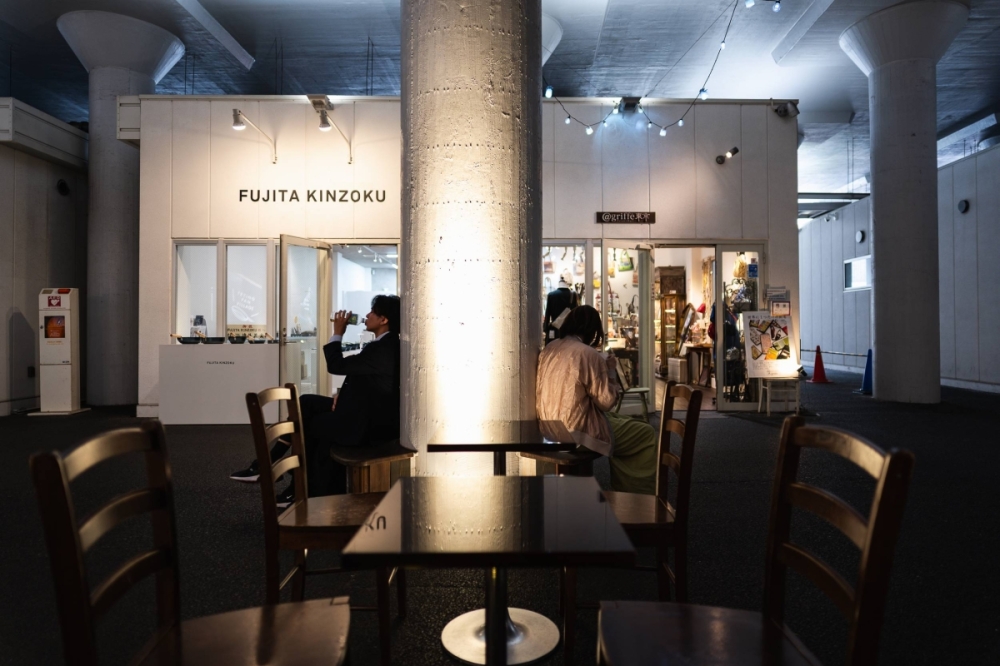
Newer retail spots must maintain the structural integrity of the railway overhead.
| JOHAN BROOKS
“What drew me in was the atmosphere,” says Yuichi Tachiyama, a designer of colorful leather goods who opened a shop in 2k540 last September. “It’s not quite a back alley but has that downtown vibe, with its dim lighting and distinct character.
“When you think of Tokyo’s glitz, places like Shibuya or Shinjuku come to mind. But Ueno, with its slightly old-school, unfashionable downtown vibe, feels fresh in a different way.”
Tachiyama’s eponymous brand, Yuichi Tachiyama, is headquartered in Fukuoka, where his workshop produces each item by hand.
“Instead of opening a shop in an area with that polished, Shibuya-style image, I wanted a place that captured a more raw, authentic side of the city,” he says. “This spot happened to open up at just the right time.”
Artisan alley
The history of Japan’s under-the-tracks spaces dates back to 1910, when a section of elevated railway connecting Yurakucho and Shimbashi stations was completed. Mention the phrase “gādo-shita,” which translates as “under the guard/girders,” even today and many Tokyoites will picture that original stretch of red-brick arches.
Back then, the idea of opening any kind of eatery under the viaduct was unheard of. Then in 1920, restaurateur Zenuemon Iwasaki launched a 24-hour oden (hot pot) stall under the tracks, sparking a new, defining feature of the capital’s urban food culture.
The concept gradually spread to other major cities. In Kobe, an area known as “Motoko” (Motoko being short for Motomachi Kōka-dori Shotengai) runs beneath the JR Kobe Line between Kobe and Motomachi stations. Lined with shops dating back to the early Showa Era (1926–89), it’s a nostalgic commercial strip that continues to thrive beneath the rumble of passing trains. In Osaka, the underside of the elevated tracks west of the Keihan Mall saw the conversion of warehouses to retail space in 1996, which has since drawn a new customer base, especially young women.

A couple takes a rest in a seating area in the middle of 2k540, a commercial complex located underneath Tokyo’s central JR Yamanote Line.
| JOHAN BROOKS
In the case of 2k540, the closure of Akihabara Freight Station in 1975 and the relocation of the Kanda wholesale fruit and vegetable market in 1989 freed up a large swath of land north of Akihabara Station. While much of the area was redeveloped in the 2000s, the stretch beneath the elevated tracks between Akihabara and Okachimachi remained underutilized. Despite its location in a busy entertainment zone, the area would fall silent after dark, prompting JR East to pursue a redevelopment plan.
The concept drew inspiration from the area’s traditional industries: small manufacturers crafting leather goods. Okachimachi is also home to Japan’s only wholesale jewelry district. However, many of these artisans sold exclusively through wholesalers and rarely interacted directly with customers. Fukuda says 2k540 was designed to remedy that.
“There are some relatively new shops at 2k540, but there’s also a sense of connection like that of neighbors in a traditional shopping street,” she says. “Since many makers and craftspeople have gathered here, it’s easy for collaborations to emerge from a creator’s perspective.”
As JR East’s first redevelopment of an under-the-tracks space, 2k540 set the precedent for a new approach to how urban rail space is used — one that would go on to inspire projects across the network.
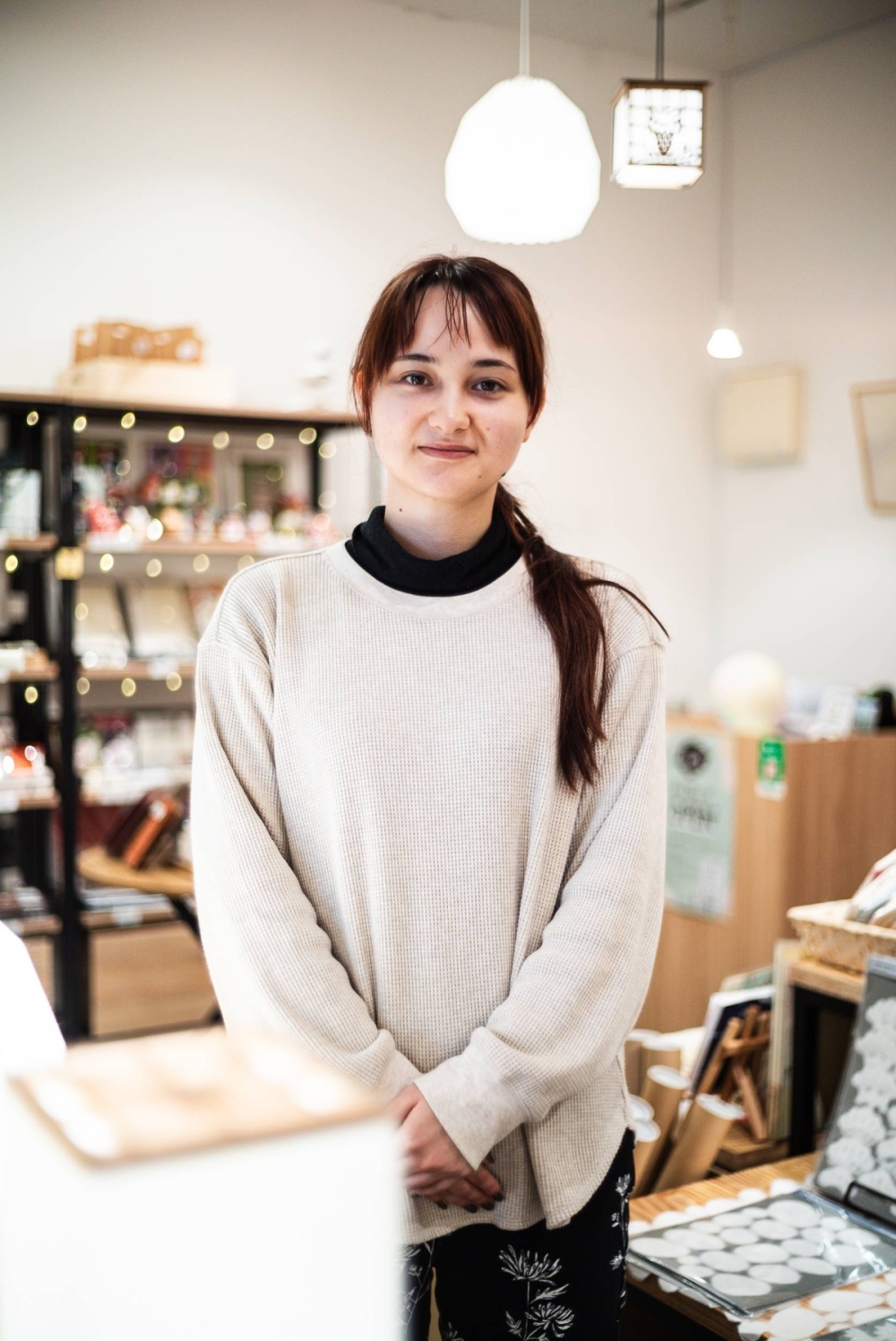
Camille Fukai is a Japanese American designer and manager of Kaminoha, which is located in the 2k540 complex.
| JOHAN BROOKS
“There’s no harsh sunlight under the tracks,” says Camille Fukai, a Japanese American designer and manager of Kaminoha, a specialty shop featuring goods made with Echizen washi paper from Fukui Prefecture. The shop opened in 2k540 in October last year.
“We get all kinds of people passing through,” she adds. “It’s a pretty diverse crowd — including overseas visitors, whom I’m often able to help in English.”
Hobbyist’s paradise
The 2k540 complex isn’t the only redevelopment in the Okachimachi-Akihabara stretch. There’s Chabara, a space housing shops selling regional food products, and Okachimachi Ramen Yokocho, which features ramen shops specializing in styles from across Japan.
Along the way toward Akihabara lies a rather unexpected facility beneath the tracks — a campsite. Called Campass, the space is designed to help novice campers practice and get comfortable with vacationing in the great outdoors.
An office housed in a trailer sits beside a barbecue area equipped with gas grills. To its right, a compact campsite unfolds with space for a dozen tents. Around this impromptu campsite are key facilities that include restrooms, a water station and a rental counter near the entrance. A full range of gear is available to borrow — tents, tables, chairs, coolers, lanterns and even hammocks. On-site staff are available to assist with setting up tents, offering advice as needed.
“It’s designed for people who want to test out their camping gear or get a feel for camping without having to travel to a traditional campsite,” says Shinpei Yamada, one of the facility’s managers. “The space can also be used for barbecue parties, and since it’s covered, there’s no need to worry about rain.”
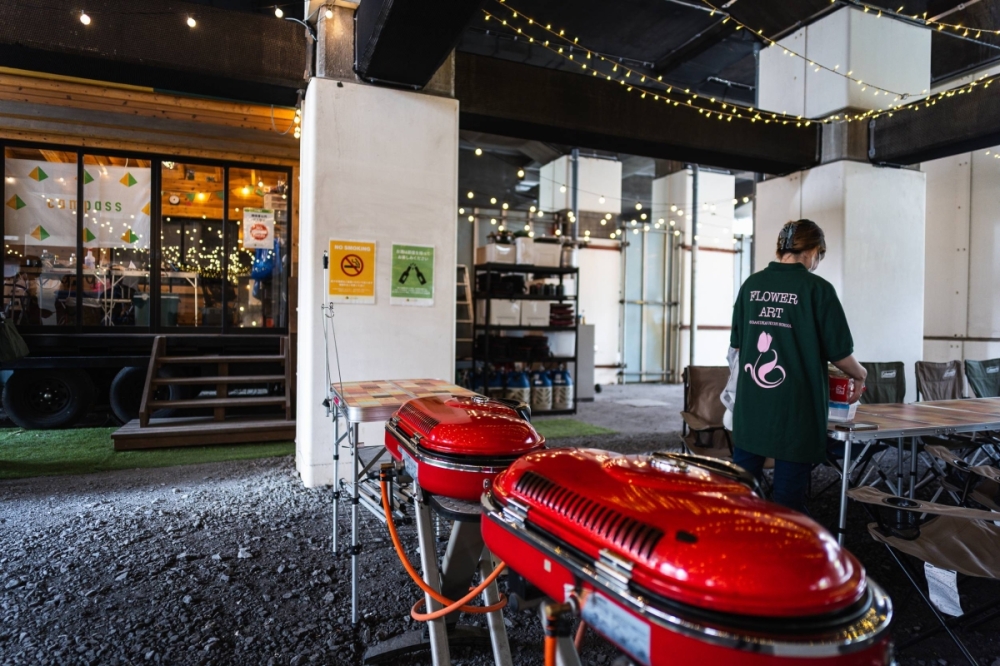
An employee from Campass helps set up barbecues underneath the tracks along the way to JR Akihabara Station.
| JOHAN BROOKS
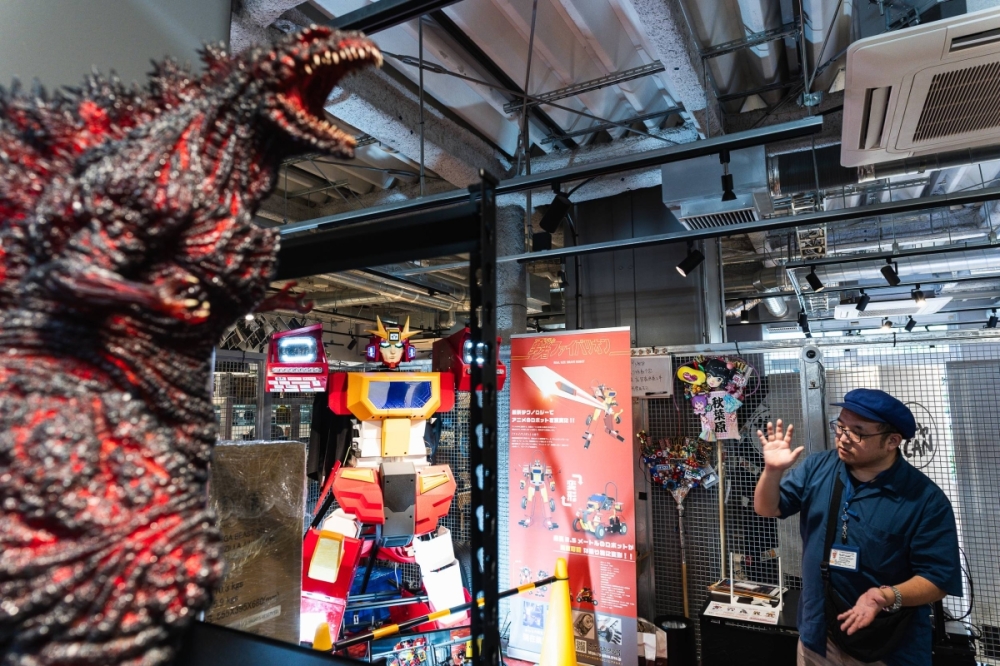
One of the most recent tenants in Seekbase, between Okachimachi and Akihabara stations, is Akiba Robolabo Meetup. The shop offers fully automatic Transformers and other robotic products.
| JOHAN BROOKS
Two or three minutes from Campass is Seekbase, a facility that combines specialist shops with restaurants and a hotel under the elevated tracks. Here, audiophiles, sofubi toy aficionados and vintage camera collectors can geek out at the many stores housed within.
Among the newest tenants in Seekbase is Akiba Robolabo Meetup, which offers robot demos, electric vehicles and Akihabara-themed tours.
“This is our first time running a full-scale retail store — we hadn’t sold physical goods before,” says Koichi Sugimori, CEO of Akiba Deep Travel, the firm behind the new shop. “Until now, we’d mainly been running tourist information centers.”
Inside is a prototype of a fully pilotable robot whose arms, head and other parts move in sync with the operator’s motions. Other futuristic gadgets on display and available to buy include fully automatic Transformers figures and the JOYcart, a foldable electric mobility scooter.
The space also serves as a hub for Akiba Deep Travel, offering travel info and taking local tour bookings. “We receive a lot of inbound travelers,” Sugimori says. “For those visiting Akihabara, we want our robots to be part of what draws tourists to the area.”
Backstreet charm
“See the red brick arches above?” says Shin Okubo of JR East Urban Development Corp. “Those are part of Japan’s first elevated train tracks built more than a century ago.” He is walking through Hibiya Okuroji, a 300-meter-long commercial facility located under the railway viaduct between Yurakucho and Shimbashi stations.
The viaducts were built in three distinct phases, Okubo says. The brick-arched portion on the west side, which began operating in 1910, is the oldest and now carries the JR Yamanote and Keihin-Tohoku lines. The structure’s design was originally proposed by a German railway engineer, who modeled it after Berlin’s elevated train system. The central span, which serves the JR Tokaido Main Line, is made of reinforced concrete and entered use in 1942. On the east side stands a viaduct built for the Tokaido Shinkansen, which opened in 1964.
Hibiya Okuroji is a commercial complex created by redeveloping and unifying three distinct types of under-track spaces. A key focus of the project was to preserve the tangible sense of history, Okubo says. “That’s why you can still see water seeping through the base of these arches — we’ve intentionally left them that way.”
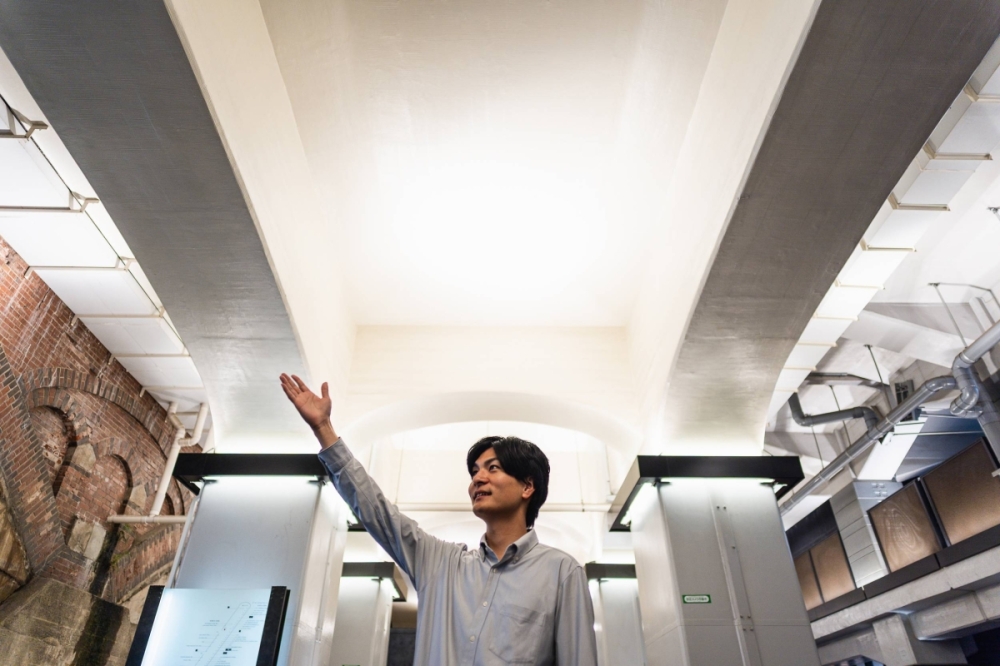
Shin Okubo points to the iconic red arches built in 1910 from the inside of retail complex Hibiya Okuroji.
| JOHAN BROOKS
The Tokaido Shinkansen, however, is operated by JR Central, while other railway lines in the area fall under the control of JR East. That means the land beneath this cluster of elevated tracks is split between two companies, and as a result the space had long been overlooked — a patchwork of newspaper depots, ice vendors and taxi parking.
This situation led to a joint study group between JR East Urban Development and Tokyo Station Development, the real estate arms of the two rail operators, in an attempt to explore a shared vision for redevelopment.
If 2k540 focuses on the artisans, and Seekbase caters to the hobbyists, then Hibiya Okuroji — situated near the upscale shopping district of Ginza — is for shoppers and foodies seeking a chic escape from the bustle of the main streets. The facility’s name derives from “oku” (back), referring to its location in Ginza, and “roji” (alleyway).
“Our bedding is priced quite high, around ¥200,000 to ¥300,000 per mattress, and it’s designed to be layered, so the total can easily reach ¥1 million or ¥2 million,” says Kenta Yamamoto, division manager for Coco-Mat Japan, a Greek natural sleep product company that operates a shop in Okuroji.
“We eventually chose this spot because it matched the concept of a ‘hidden retreat for adults.’ It felt like a good fit, both in terms of atmosphere and customer income level,” he says. “Plus, the calm, uncluttered feel of the space under the train tracks intrigued us. The development is still relatively new, so we were curious about its potential.”
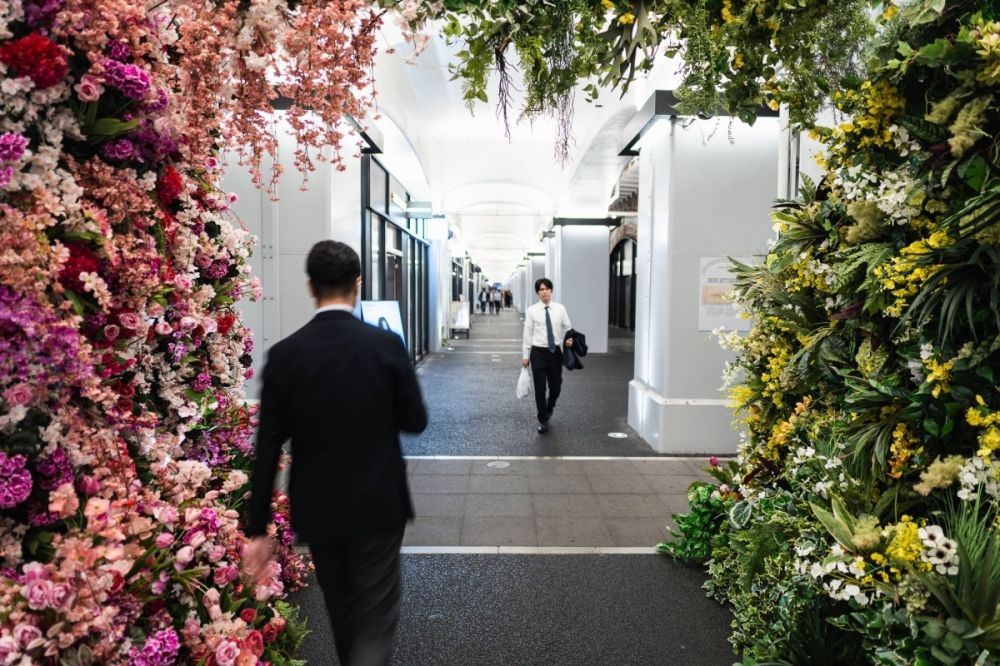
Flowers decorate the passageways of Hibiya Okuroji, a high-class touch that is sure to impress the wealthier clientele that frequent nearby Ginza.
| JOHAN BROOKS
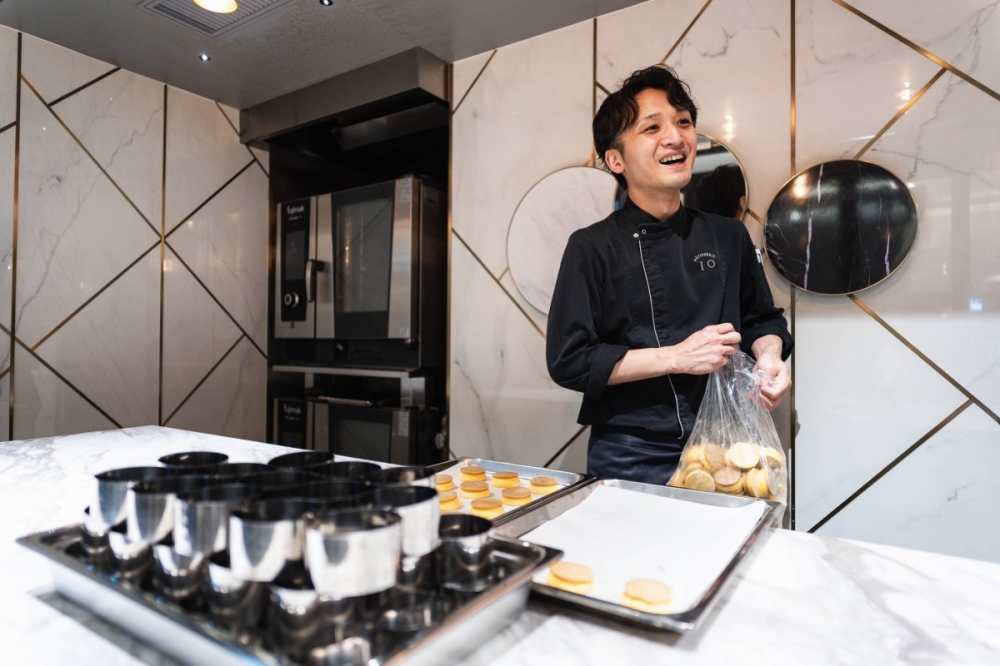
Shunpei Mikami is the manager of Patisserie TEN& in Hibiya Okuroji.
| JOHAN BROOKS
Spaces beneath elevated tracks come with both advantages and challenges. They offer easy access to nearby stores and restaurants — but overhead trains bring noise and temperature swings.
“The shinkansen is intense,” says Shunpei Mikami, manager of Patisserie TEN&, a specialty sweets shop and cafe known for its canele and cream puffs. “The shop is soundproofed, but because the columns run through here, you can still feel the vibrations. It’s also pretty hot in the summer and cold in the winter.”
Mobile phone reception is another drawback. Okubo says JR East is working on the issue with telecom providers.
Due to its close proximity to Ginza, Mikami says the majority of customers are from overseas — a trend that was apparent after a Taiwanese influencer and podcast host highlighted the shop’s cream puffs to followers. “It was really an unexpected bonus.”
While Okuroji, with its soft lighting and modern shops, comes across as slick and stylish, just across the street from its main entrance lies an old alley beneath the tracks. Revamped in 2019, the space offers a more classic Tokyo scene, with nearly a dozen izakaya serving scores of office workers. The air fills with the sounds of clinking beer mugs and raucous laughter — a reminder that while these under-track spaces continue to evolve, traces of the city’s past aren’t going anywhere.
www.japantimes.co.jp (Article Sourced Website)
#Revitalizing #space #Tokyos #train #tracks
